LED modules, clusters, strips, panels, displays, screens — what's the difference?
LEDs have taken the world by storm. LED flashlights, strips, rulers, spotlights, clusters, panels, crawling lines, road signs, screens, boards, monitors, indicators, traffic lights, etc. — Today, LEDs can be found everywhere.
Within this article, we will compare some of the popular guises of LED applicability, consider the characteristics of the devices, the principles of their operation and the scope of application. In short, we will answer the questions of what is the difference between an LED strip and a strip, a panel and a panel, a cluster and a module.
LED rulers
For the production of lighting systems and lighting devices in general, LED lines are often used. These devices are elongated LED modules of various sizes, with a rigid or flexible base, on which LEDs with current-limiting circuits are fixed.
LED strips are successfully used both indoors and outdoors for illuminated advertising and architectural lighting. Installing the ruler is easy, often by gluing to a self-adhesive backing.If necessary, the ruler can be cut according to the markings applied to its surface.
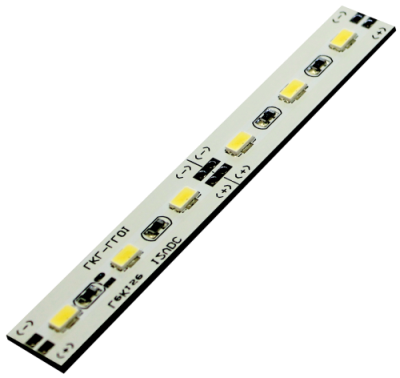
LED strips are in demand in warehouses, shops and shopping centers, night clubs, exhibition halls, public transport, enterprises, parking lots, etc. LED strips are particularly popular in decorative lighting: for lighting work surfaces, niches, shelves, walls, ceilings, floors, etc.
The use of colored LED strips with RGB - controller really opens up the widest possibilities for creating the most amazing light-dynamic effects.
The rulers are flexible, rigid and aluminum based. Flexible ones are very popular for automatic setup, rigid ones for racks and showcases, aluminum ones have an increased service life and are applicable in more difficult conditions, especially in constructions working outdoors. It is very easy to replace the fluorescent lamp in the luminaire with an LED line — more energy efficient, bright and safe for health (no flickering and UV radiation).
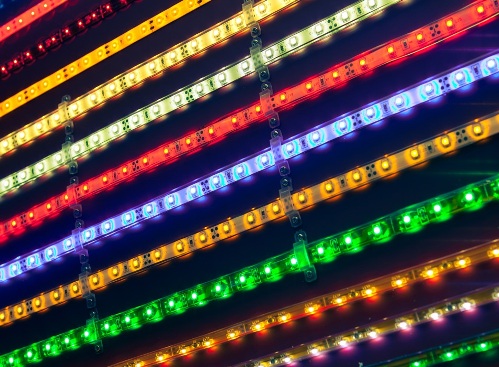
Aluminum-based strips emit heat better, which is why they are more attractive than LED strips in terms of decorating shop windows, billboards, advertising signs. The service life of aluminum-based rulers (due to their high strength and excellent thermal conductivity) significantly exceeds the service life of LED strips. It is also noteworthy that several lines can be placed on a large area radiator.
LED panels
Speaking of modern LED lighting for various purposes, we cannot fail to mention LED panels, which are highly functional lighting fixtures suitable for both residential and industrial premises.Lovers of sophistication in the interior value them highly, not to mention the impeccable technical characteristics inherent in LEDs in general.
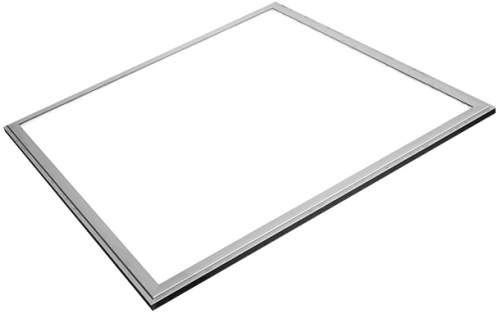
Durable aluminum alloy provides superior thermal conductivity for LED cooling. The LEDs themselves are located along the perimeter of the panel or over its entire area. In the first case, a special reflective matrix serves for the correct dispersion of light, which redirects the light flux to a special diffuser, perpendicularly down to the illuminated room.
The panels are installed like ordinary lighting fixtures; they often have their own regulated power supplies. The color of the glow is selected from a specific shade to just cold white — it all depends on which LEDs are installed in the panel.
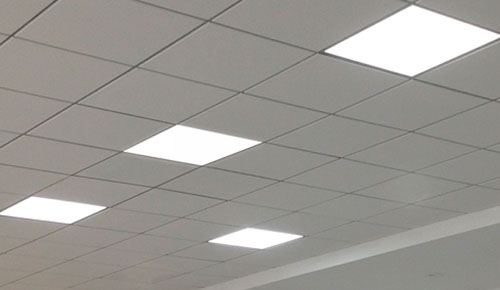
LED ceiling panels are available in a standard square shape 600×600, as well as other sizes in the form of oval, rectangle, circle, etc. There are wall, floor, shelf decorative and other LED panels, including design panels and tripod studio lighting. The panels are suitable for children's rooms, as they emit safe light without flickering and without harmful ultraviolet radiation, with the possibility of adjusting the light flow (including night light mode).
LED clusters (aka LED modules)
An LED cluster or module is a part of a certain size that includes several LEDs working together according to a certain algorithm. In other words, a cluster (module) is a small light-emitting node composed of LEDs.
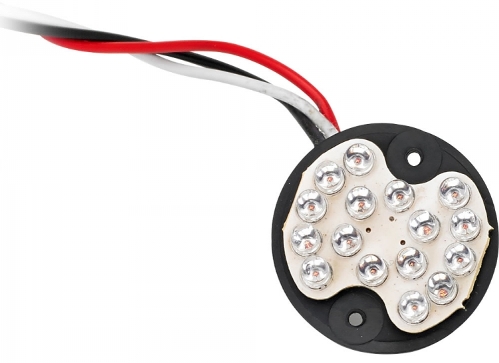
LED clusters are available in single color and multi-color. Multi-color RGB LED clusters contain LEDs of three colors, so any desired shade of light can be obtained from the cluster.
Each cluster has its own body, and several clusters can be connected by bodies to each other thanks to the modular design and form a single unit. Therefore, clusters are also called modules.
Clusters are usually cells filled with a compound that can be combined and built in such a way as from pixels, different screens and boards. Special purpose clusters are also called "display module" or "dashboard module".
Different groups differ in size, color of light, number of LEDs, their brightness, power parameters and the way of controlling the device. In general, according to the degree of complexity, LED modules (clusters) of the following three types can be found on the market today: without current-limiting circuits, with current-limiting circuits and with power controllers.
The simplest clusters contain only LEDs, and here it will be necessary to connect a current limiting circuit in series. Clusters with built-in limiting elements are instantly connected to the controller. Clusters with a built-in controller are powered and controlled simply (changing color and brightness) via a special bus (three-wire or two-wire).
The color of the cluster can be red, blue, green, yellow, white, there are also two-color (for example, green with red) or multi-color (RGB-clusters). Depending on the number of LEDs in the cluster and their power, the cluster turns out to be more or less bright, larger or smaller, larger or smaller in area, while the brightness of a cluster, according to statistics, not exceeding 1 candela.
The cluster is often equipped with a lens, sometimes with a reflector, it can be equipped with a stand, sunshade and other protective elements that affect the dimensions of the cluster.
The advantages of LED clusters are obvious. The clusters are compact, so they can be used in conditions of limited space. The service life of LEDs exceeds 10 years, and their efficiency is many times greater than that of incandescent and neon lamps.
LEDs tolerate low temperatures well, are very durable and can be easily combined in dimmer circuits. The wide range of LED clusters on the market today allows for the most amazing design projects.
LED displays
Electronic boards have always served to display information. Previously they were made up of light bulbs, today they use LEDs. Electronic displays include devices for displaying static or dynamic images, as well as scrolling lines and even LED wall clocks.
Such solutions can often be found in markets, in shopping centers, in sports facilities, near pharmacies, in exchange offices and many other places. At the customer's request, manufacturers create a variety of LED displays.
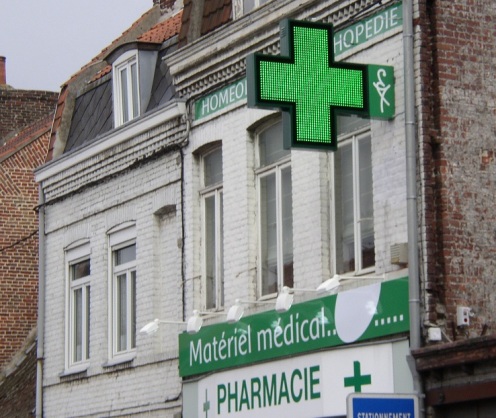
A board of any size is assembled from small LED groups (segments). Each segment can be monochrome (red, blue, green, white, etc.), full color (RGB), or tricolor.
White and red LEDs are traditionally the brightest. Tri-color LEDs are obtained from two-color LEDs, the combination of two colors gives a third color. Full-color displays can even play video and photos because they generally have 16,700,000 shades available.
The body of the board is usually made of aluminum profile and made hermetically sealed so that the degree of protection of the body meets the customer's request. The exterior needs IP65 to withstand direct water flow. The pole mount is usually hinged. Such displays are controlled by a wired method, via Wi-Fi, via a radio channel, from a USB flash drive or via Ethernet.
LED screens (LED screens)
The development of LED signs led to the emergence of full-fledged LED screens. The pixels in them are LED groups or single LEDs. Thanks to such screens, the streets of big cities are full of advertisements, information stands, road signs, etc.
Every year, the number of advertising LED screens on the streets of cities grows and grows. OLED displays for TVs, monitors, various devices, etc. are created in a similar way.
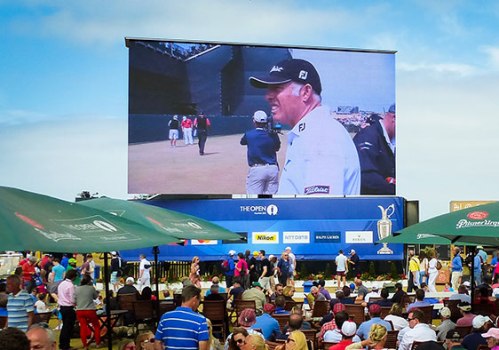
The world's largest LED TV is located at Cowboys Stadium in Arlington, Texas, USA. Its dimensions are 49 × 22 meters, an area of 1078 square meters (there are LED displays and much larger sizes, but they are not intended for television).
There are cluster and matrix LED screens. We already talked about cluster (there are several LEDs in one cluster), and matrix screens contain LEDs not in small blocks, but on large boards together with the control electronics.
The advantages of LED screens include: high brightness, the ability to obtain a large size and arbitrary aspect ratio, good maintenance, the ability to work in almost any climate zone (possibly with a cooling system).
See also: LED linear lamps , External LED floodlights
